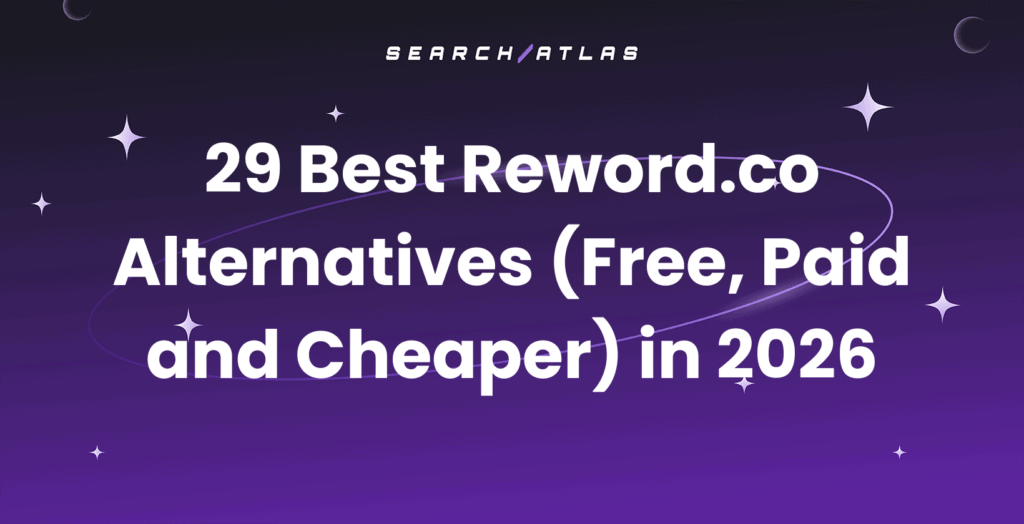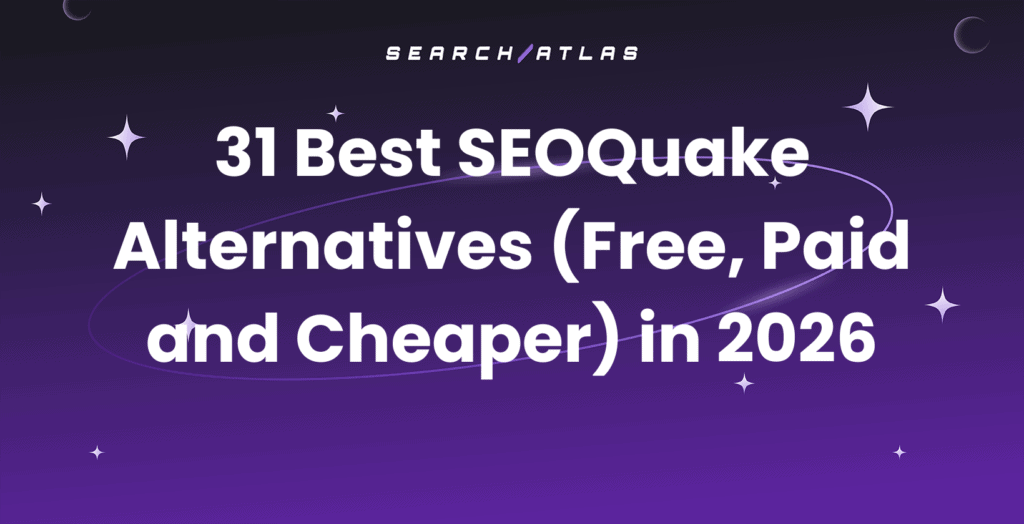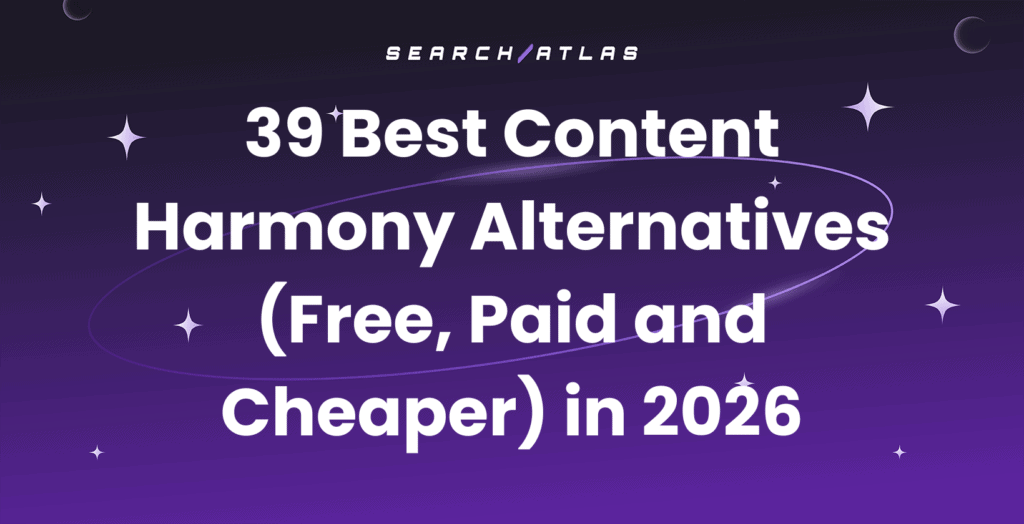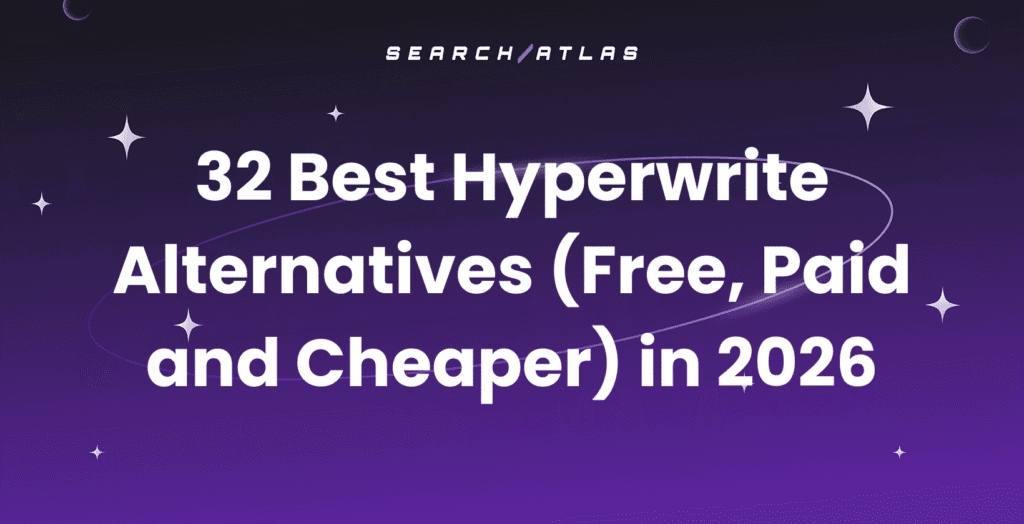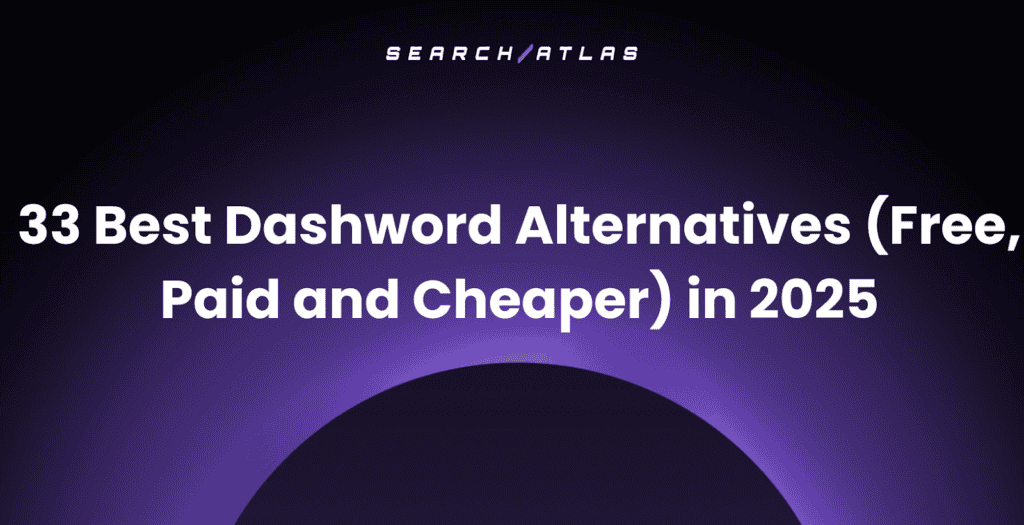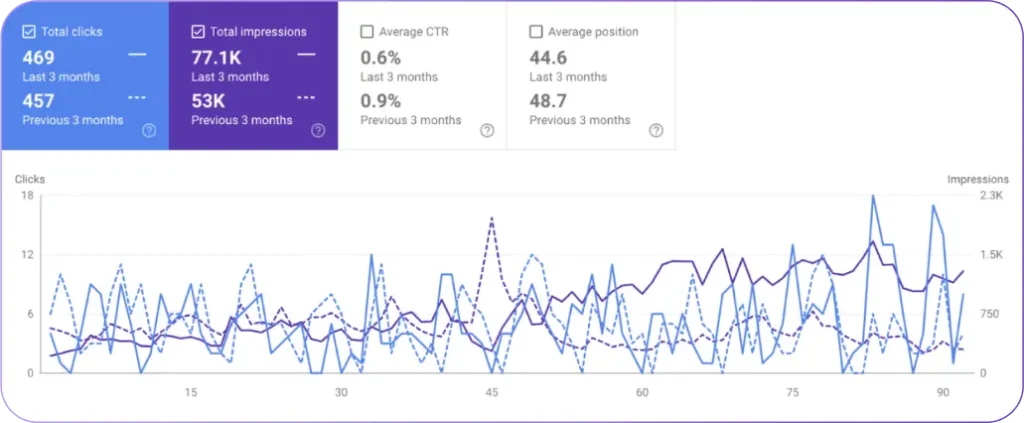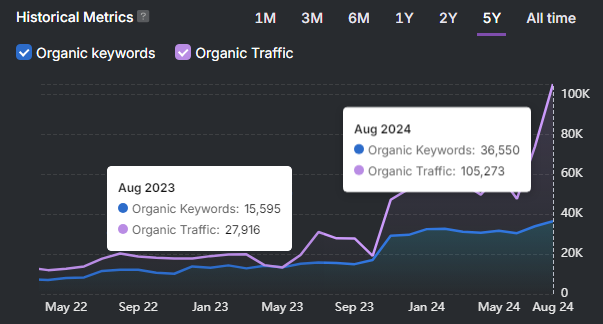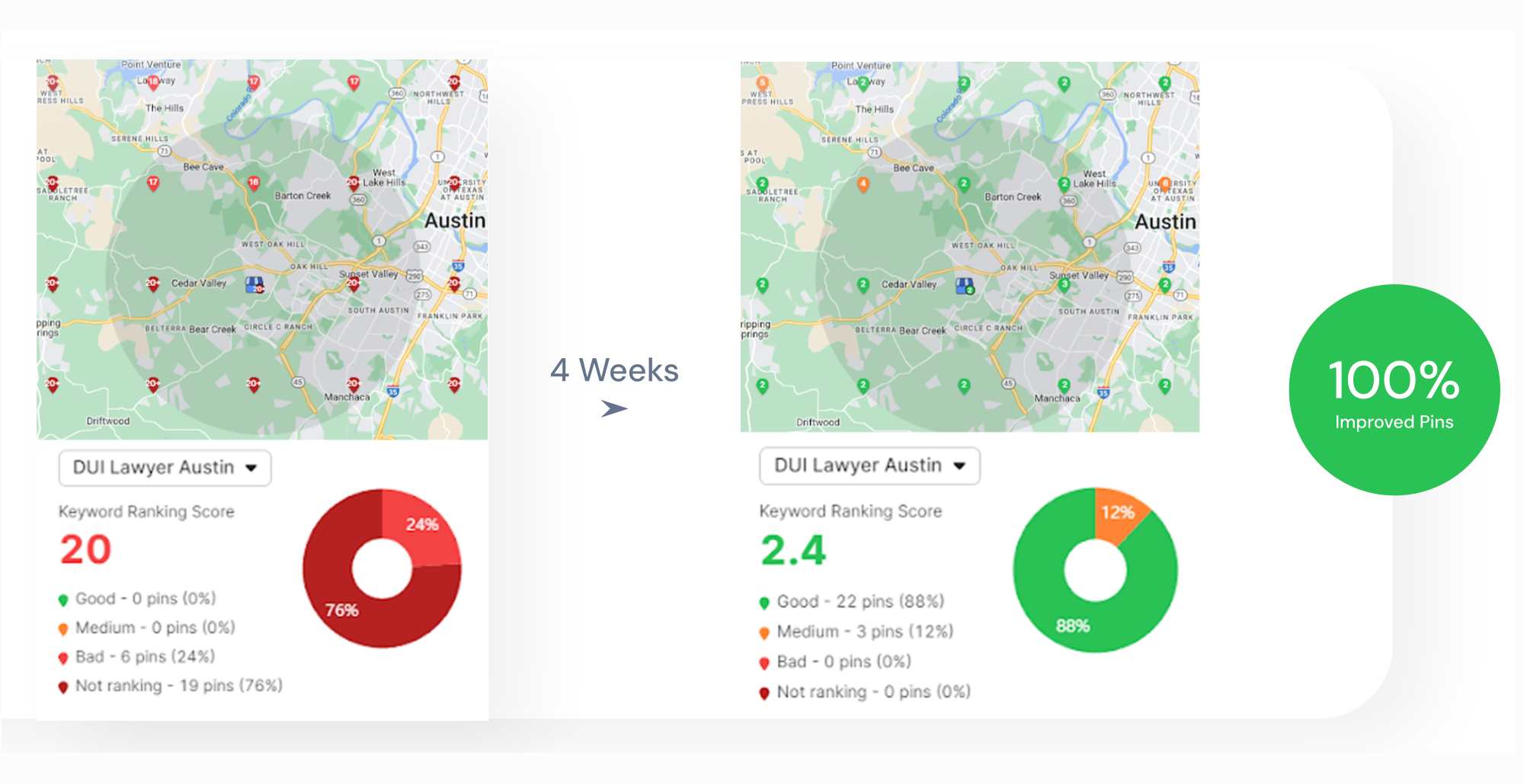To improve visibility in ChatGPT searches, focus on Generative Engine Optimization (GEO). Key optimization strategies include creating high-quality, structured content with Q&A formats, building authority through reputable mentions, implementing technical SEO with schema markup and Bing optimization, enhancing local business presence, and using natural language processing techniques.
Success requires monitoring AI crawler activity and adapting to evolving AI search technologies for improved visibility and conversions.
What Are the Benefits of Optimizing for ChatGPT Visibility?
The benefits of optimizing for ChatGPT visibility are listed below.
- Increased Organic Branded Traffic. ChatGPT recommendations drive users to search for your brand on Google or Bing directly.
- Improved Brand Visibility. Appearing in ChatGPT responses exposes your brand to new audiences.
- Increased Conversions. ChatGPT delivers pre-qualified, high-intent traffic that converts better.
- Improved Brand Trust. ChatGPT endorsement signals credibility and authority to users.
How Does ChatGPT Rank Websites?
ChatGPT ranks websites differently from traditional search engines. ChatGPT provides product or service recommendations based on accurate, well-structured, reputable, and relevant sources. The LLM focuses less on backlinks and more on content relevance for the query. Optimization for generative AI visibility is known as generative engine optimization (GEO), and it is becoming more important for marketers and brands.
What Helps Businesses Rank in ChatGPT?
We explain what helps businesses rank in ChatGPT below.
1. Content Optimization
Content optimization for ChatGPT involves building a strong SEO foundation with additional effort to make the content easily understood and used by AI. We list important content optimization factors below.
- Content Quality. Create high-quality, authoritative content that directly answers user questions with clear, well-researched information. Establish expertise through comprehensive coverage of topics.
- Formats. Use a question-and-answer format to structure content for easy AI understanding and utilization. Organize information hierarchically with clear website headings and subheadings that allow AI models to identify and extract relevant answers. Use short paragraphs and bullet points.
- Summaries. Include concise, snippet-ready summaries at the beginning of content to help AI models quickly grasp main points. Position key takeaways prominently so ChatGPT easily identifies and references your most important information.
- Content Freshness. Keep content fresh and relevant by regularly updating information, especially for time-sensitive topics. Monitor industry changes and update statistics, examples, and recommendations to ensure AI models access current and accurate data.
- User Intent Alignment. Address the specific user intent for each query, similarly to how marketers address keyword intent.
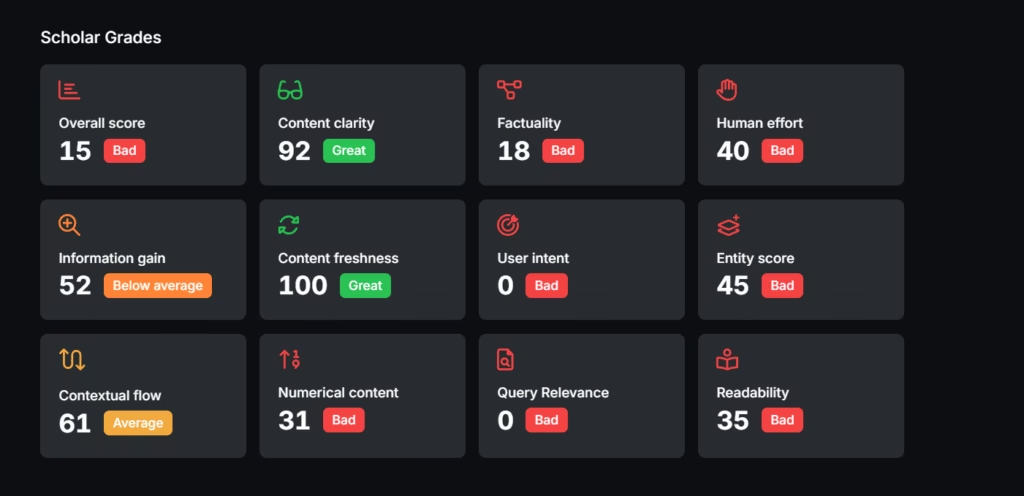
Use Search Atlas Scholar to analyze these factors. Scholar quantifies these factors and additional hidden factors that are useful to SEO and GEO. Scholar metrics are listed below.
- Content Clarity. Assess sentence structure, reading level, and content flow to measure how clearly your page communicates ideas.
- Factuality. Check how well the language and concepts fit with the topic. This makes sure your content talks about the right things.
- Human Effort. Review signs of human input across the content, such as images, schema markup, and more. This shows that real people created your content instead of copying it from somewhere else.
- Information Gain. Identify whether the page offers unique insight or simply repeats what already exists.
- Content Freshness. Detect outdated material by reviewing dates, references, and publication cues. This prevents content decay.
- User Intent Alignment. Compare your content format and depth to what searchers want based on SERP signals. This shows if your content gives people what they’re looking for when they search.
- Entities. Check whether the content mentions key concepts that connect to the topic in Google’s Knowledge Graph. This ensures you include important related words that search engines and LLMs expect to see.
- Contextual Flow. Analyze the order and relationship of subtopics to confirm that the structure makes logical sense. This makes sure your content moves from one topic to the next in a way that makes sense.
- Numerical Score. Measure the use of statistics and data points within the content. This scoring tracks how well you support your claims with numbers.
- Query Relevance. Check alignment between the target keyword, URL, title, and headings to confirm topical focus.
- Readability. Rate the clarity and complexity of your writing for search and user experience.
2. Online Presence and Authority
A strong online presence of the brand signals trustworthiness to AI models. We explain how to improve your online presence and authority to increase your chances of appearing in LLM searches.
- Secure brand mentions on reputable websites and platforms to boost authority and credibility.
- Earn backlinks from authoritative websites in your niche.
- Get featured on high-authority sites since AI models pull information from trusted sources.
- Build consensus across the web by appearing consistently in trusted sources, local lists, and review platforms.
- Earn backlinks and mentions from sources ChatGPT already uses.
To earn mentions or backlinks from sources ChatGPT already uses, leverage the Quest tool from Search Atlas. Type in the query you want to target. Quest analyzes it and shows you related questions, answers, and sources the model used to generate its answers.
Quest then lets you instantly create an outreach campaign to these sources. The campaign is generated so it targets the exact query.
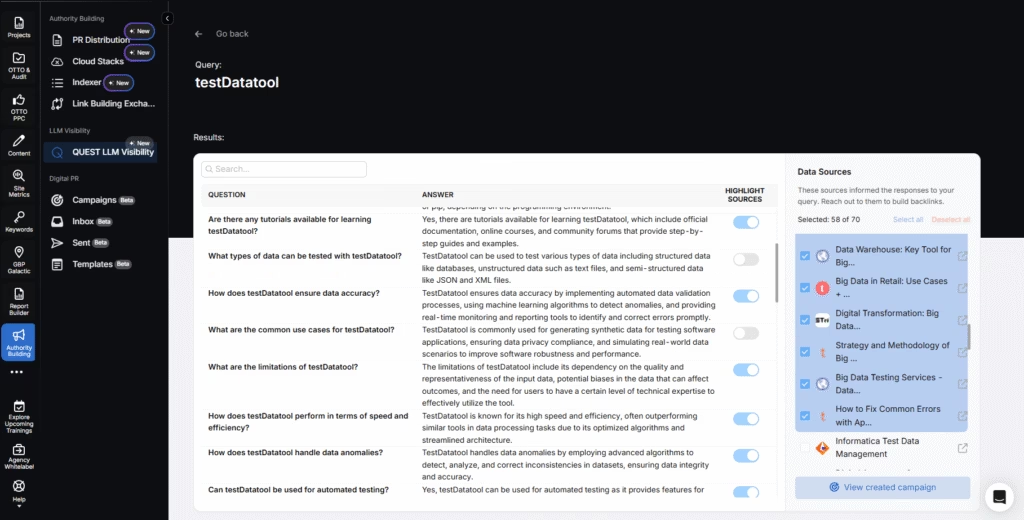
3. Technical and On-Page SEO Strategies
Technical SEO forms the foundation that allows AI systems to access, understand, and recommend your content effectively. These strategies ensure your website meets the technical requirements that AI models need to crawl and process your information. We explain the key strategies below.
Schema Markup and Structured Data
Structured data enhances knowledge graphs, which are essential for AI models to interpret and present information effectively. Schema makes it easier for ChatGPT to pull accurate answers directly from your site because it marks up questions and answers with structured data. This markup creates a clear format that AI systems recognize and extract information from quickly. The markup acts as a translation layer that makes your content more accessible to both search engines and AI systems.
Optimizing for Bing
Optimize for Bing search results since ChatGPT frequently conducts Bing searches behind the scenes. ChatGPT depends on Microsoft Bing ranking factors, which makes Bing enhancement essential for AI visibility. Strong performance in Bing search results directly boosts your chances of receiving ChatGPT suggestions.
It is easier to optimize for Bing with Bing Webmaster Tools. To add your website to Bing Webmaster Tools, follow the steps below.
1. Add Your Site. Import from Google Search Console or add manually by URL. Then, grant Bing access to import verified sites automatically.
2. Verify Ownership. Verify ownership through DNS auto verification or the XML file method.
3. Submit URLs. Use a URL submission tool. Add one URL per line and click submit. URLs get evaluated instantly for indexing.
Improving Site Speed
Improve site loading speed for a better user experience and AI visibility. Regularly perform technical SEO audits to resolve slow load times, broken links, and mobile-friendliness issues.
Focusing on Keyword Research
Keywords play a vital role in boosting your ChatGPT rankings. Insert them carefully into your content to maintain a natural flow. Forced or robotic keyword placement hurts your credibility and readability. Use a keyword research tool to discover question-based and conversational keywords.
4. Local Business Visibility
To improve your local business visibility, follow the steps listed below.
- Create and verify a complete Bing Places listing (free and takes minutes to set up).
- Maintain complete, consistent business listings across Google, Yelp, BBB, and Bing Places with reviews, photos, hours, and descriptions.
- Add customer testimonials and reviews to your website homepage and service pages.
- Generate fresh Google reviews regularly by asking happy customers for feedback.
- Optimize for local SEO ranking factors.
Multi-location businesses benefit from local SEO automation. Local SEO automation includes local keyword tracking, local competitor research, local citation services, and Google Business Profile management.
5. Monitoring and Adaptation
Regular monitoring helps you identify opportunities and adapt your approach based on real performance data rather than assumptions. Monitoring and adaptation actions are listed below.
- Use SEO monitoring tools to track performance and identify improvement areas.
- Stay informed about AI technology updates and best practices for AI-powered search.
- Test different content strategies and monitor their impact on visibility.
6. NLP (Natural Language Processing) Optimization
NLP (Natural Language Processing) Optimization helps search engines grasp the context and intent behind user queries, unlike traditional SEO, which focuses on keyword matching. To optimize for NLP, follow the steps listed below.
- Write content that matches natural conversation patterns and how people actually ask questions.
- Use semantic keyword variations and related terms, not just exact-match keywords.
- Structure content to answer follow-up questions and related queries.
- Implement a conversational tone that mirrors how users interact with AI assistants.
- Focus on topic clusters and entity relationships rather than individual keywords.
How Do You Know If LLM Crawlers Visited Your Site?
To know which crawler visited your site and how it interacted with it, use the Site Auditor Crawl Monitoring tool. The Crawl Monitoring tool shows you what pages attract bots, the frequency of the visits, and bot priorities. The Crawl Monitoring tool helps you adjust your link structure to improve discoverability.
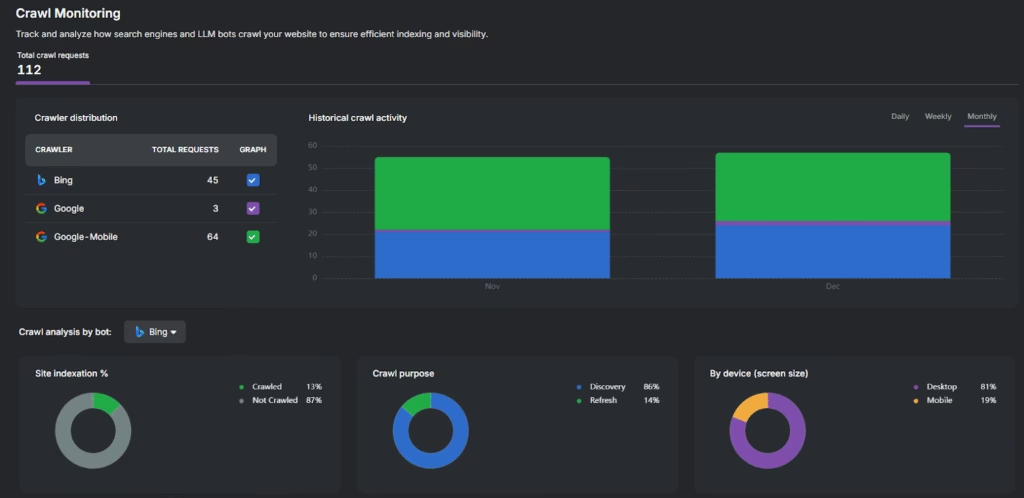
The Crawl Monitoring Tool tracks activity across several crawlers, with the key crawlers listed below.
- Bing
- GPTBot
- ClaudeBot
It is connected to the OTTO SEO AI agent, which helps you resolve crawlability problems in a few clicks.




